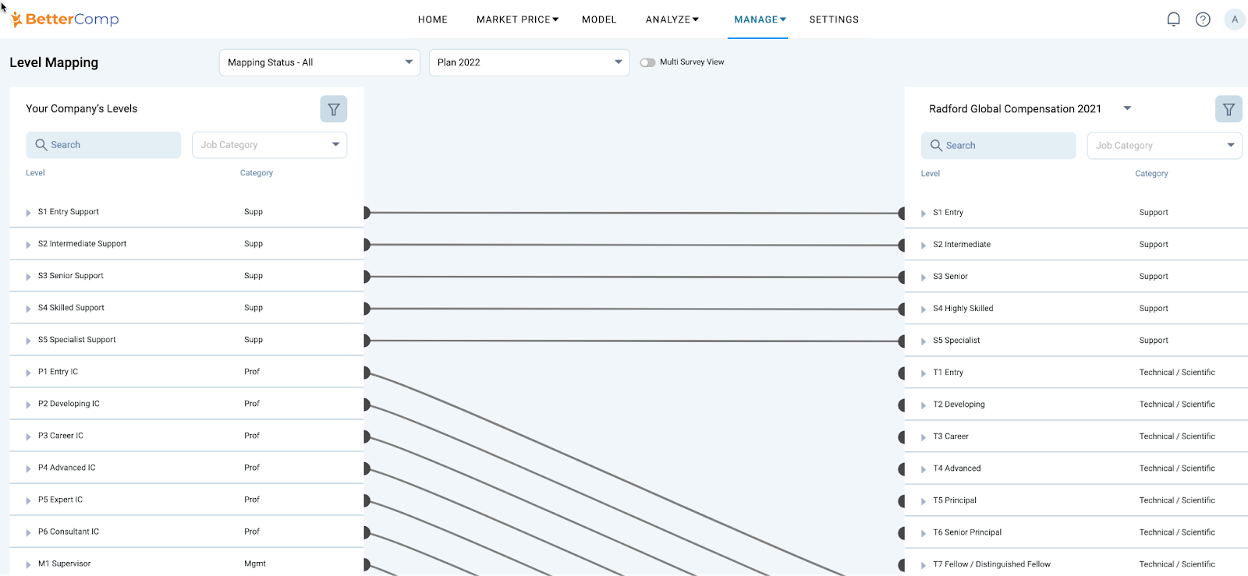Seems like every few weeks there’s another announcement about a new pay transparency and salary disclosure law. When it comes to legislative change, California is notoriously the canary in the coal mine, and was one of the first to enact pay transparency legislation. Many more US states have joined the ranks by adopting pay transparency laws and, if you want the latest, HR Dive has a running list of all states, cities, and other jurisdictions with salary disclosure laws.
I won’t get into the legal ramifications of these laws or the details of what they mean for companies that have or may hire people working in those locations. However, one key thing sticks out to me: the elevated importance of compensation teams and professionals, and particularly the value of a well-developed market pricing practice, for companies with employees in those states.
Salary Disclosure and Market Pricing
Companies that need to comply with any state's pay transparency law mandating upfront salary disclosure, are often challenged with what salary range to put on their job postings. The best way to determine that range is with market pricing.
While you could just wing it and hope that you’re not shooting yourself in the foot by underpricing a crucial job or taking a massive hit to your bottom line by over pricing the same, you’re better off making an informed decision. And that starts with data - your internal data along with external market salary data - most likely from one or more salary surveys. (Commonly used surveys include those from Aon, Mercer, Culpepper, and WTW. For more info about selecting the right survey for your organization, you can check out our article.)
Once you have market data that’s suited to your business, you can see where you’re ahead of the market or behind the market for specific families, jobs, or locations. This involves benchmarking individual jobs or developing a job architecture and aligning internal levels with survey levels, for consistent job matching.

Beyond data, you need to have a compensation strategy. Should you lead or lag the market for different job families? Or pay the same relative to the market across the board? It’s challenging to be pricing jobs without a strategy driving the work.
Armed with your comp strategy and market data, you can extrapolate what a salary range would be for a new position. And, voila! You have the information you need to provide realistic ranges for new job postings.
What About Existing Employees?
As you’re going through your market pricing exercise, you may find some pretty significant pay discrepancies. One item of note in California's law is that companies are required to share the salary range for existing employees’ jobs if that employee asks. If you find some major outliers, it might be necessary to increase compensation or make title / role adjustments to ensure that existing employees’ jobs and salaries match your overall structure.
 Failing to make adjustments for existing employees could create problems. If employees see a job posting for a comparable open position with a salary range much higher than their current pay, well, you can imagine the dissatisfaction that would produce. Similarly, if employees see comparable positions posted with salary ranges well below theirs, they could get the impression that you’re intending to replace them with cheaper labor.
Failing to make adjustments for existing employees could create problems. If employees see a job posting for a comparable open position with a salary range much higher than their current pay, well, you can imagine the dissatisfaction that would produce. Similarly, if employees see comparable positions posted with salary ranges well below theirs, they could get the impression that you’re intending to replace them with cheaper labor.
Your market pricing exercise may also uncover discrepancies related to race or gender. We all want to believe that our company is different from the norm, but without a process and structure, it’s easy for those gaps to grow despite our best intentions. Pay equity solutions like the one offered by firms like Syndio can help address any discrepancies and set up processes to make sure they don’t arise in the future.
It’s Called Pay Transparency, so Communicate!
Once you have your market-based pay structure in place, it’s vital to open lines of communication throughout your organization. Hiring managers need to know how much they can expect to pay new hires; employees need to understand why certain people are getting new job titles or raises. Most importantly, being upfront about how salaries are going to be determined going forward generates trust and goodwill with your employees.
What the Future Holds
While pay transparency laws are gaining traction, there’s no clear nationwide standard - yet. I don’t need a crystal ball to see that more stringent transparency rules including the requirement to post salary ranges with job postings are going to crop up in other states, counties, and municipalities. Who knows, maybe even seeing the trend, the federal government will pass pay transparency legislation with an eye toward decreasing fragmentation.
Whatever happens, the shift toward mandated publication of salary ranges is not going to suddenly evaporate. Now is the time for businesses to build their market pricing function to get out ahead of the trend and prepare themselves for the not very distant future.
Read More about Pay Transparency
Check out the latest BetterComp Blog article on the current state of pay transparency and predictions for the future.


COMMENTS